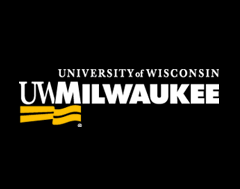Optimization of Cleaning Processes for the Production of a Novel Porous Material for the Removal of Phosphorus
Mentor 1
Marcia Silva
Mentor 2
David Garman
Location
Union Wisconsin Room
Start Date
28-4-2017 1:30 PM
End Date
28-4-2017 4:00 PM
Description
The research goal was to optimize the method of base material preparation for a novel porous material fabrication for removal of phosphorus from water by reducing costs in the preparation phase. By using a natural porous material and functionalizing it with metal nanoparticles we can remove phosphorus in an effective manner comparable to other more expensive alternatives. The production method includes the initial cleaning process of the porous material prior to fabrication with metal oxides. Reduction of the cleaning processes was examined to save money and resources in a proposed large scale production. By simplifying the cleaning process, the production cost for cleaning wastewater can be reduced. In addition, money can be saved by using tap water instead of the deionized water used for research purposes. Our results from testing numerous cleaning processes indicated that a cleaning process involving a three step sonication treatment with tap water showed comparable results to traditional method of fabrication involving a ten step microwaving and sonication operation with deionized water. These results show that the making of the novel material can be optimized for inexpensive production in a large scale setting.
Optimization of Cleaning Processes for the Production of a Novel Porous Material for the Removal of Phosphorus
Union Wisconsin Room
The research goal was to optimize the method of base material preparation for a novel porous material fabrication for removal of phosphorus from water by reducing costs in the preparation phase. By using a natural porous material and functionalizing it with metal nanoparticles we can remove phosphorus in an effective manner comparable to other more expensive alternatives. The production method includes the initial cleaning process of the porous material prior to fabrication with metal oxides. Reduction of the cleaning processes was examined to save money and resources in a proposed large scale production. By simplifying the cleaning process, the production cost for cleaning wastewater can be reduced. In addition, money can be saved by using tap water instead of the deionized water used for research purposes. Our results from testing numerous cleaning processes indicated that a cleaning process involving a three step sonication treatment with tap water showed comparable results to traditional method of fabrication involving a ten step microwaving and sonication operation with deionized water. These results show that the making of the novel material can be optimized for inexpensive production in a large scale setting.



